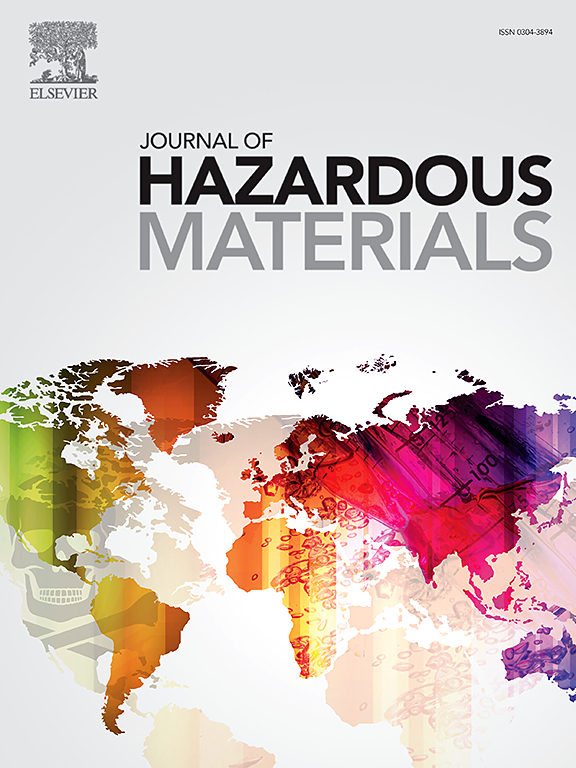Enhanced Sulfamethoxazole Removal in Water and Wastewater by Ferrate(VI)/Perborate System via Borate Buffering
IF 12.2
1区 环境科学与生态学
Q1 ENGINEERING, ENVIRONMENTAL
引用次数: 0
Abstract
Ferrate(VI) is prone to self-decomposition in water, leading to the loss of active substances Fe(V) and Fe(IV). Therefore, the use of Fe(VI) alone has limited practical applicability in municipal wastewater and industrial wastewater treatment scenarios due to its insufficient pollutant removal efficiency. This study discussed the removal efficiency of the Fe(VI)/perborate system for sulfamethoxazole and other 6 drugs in pure water within 5 minutes, and the removal efficiency of the Fe(VI)/perborate system for sulfamethoxazole in effluent and secondary effluent in a wastewater treatment plant (WWTP) within 5 minutes. Results show that the sulfamethoxazole removal efficiency reached 88.63% in the influent of Lijiang B WWTP and 79% in the secondary effluent of Wuhan WWTP. The removal efficiency of sulfamethoxazole in pure water reached 25.8% in 5 minutes. This finding is explained by the buffering with the borate produced by the hydrolysis of Fe(VI)/perborate, which maintains the pH around 9 and, in turn, inhibits the reduction of active species. Moreover, H2O2, 1O2, and O2•- radicals generated by Fe(VI)/perborate accelerate the activation of Fe(VI), and the Fe2+ produced in the system participates in Fenton reactions with H2O2. This study offers a novel approach for using ferrate in practical water treatment.

Ferrate(VI)在水中容易自分解,导致活性物质 Fe(V) 和 Fe(IV) 的损失。因此,在城市污水和工业废水处理方案中,单独使用 Fe(VI)的实际适用性有限,因为它的污染物去除效率不够高。本研究讨论了 Fe(VI)/过硼酸盐体系在 5 分钟内对纯水中磺胺甲噁唑等 6 种药物的去除效率,以及 Fe(VI)/过硼酸盐体系在 5 分钟内对污水处理厂(WWTP)出水和二级出水中磺胺甲噁唑的去除效率。结果表明,丽江 B 污水处理厂进水对磺胺甲噁唑的去除率达到 88.63%,武汉污水处理厂二级出水对磺胺甲噁唑的去除率达到 79%。纯水中的磺胺甲噁唑在 5 分钟内的去除率达到 25.8%。这一发现的原因是,Fe(VI)/硼酸盐水解产生的硼酸盐具有缓冲作用,可将 pH 值保持在 9 左右,从而抑制活性物种的还原。此外,Fe(VI)/过硼酸盐产生的 H2O2、1O2 和 O2 自由基加速了 Fe(VI) 的活化,体系中产生的 Fe2+ 参与了与 H2O2 的芬顿反应。这项研究为在实际水处理中使用铁酸盐提供了一种新方法。
本文章由计算机程序翻译,如有差异,请以英文原文为准。
求助全文
约1分钟内获得全文
求助全文
来源期刊

Journal of Hazardous Materials
工程技术-工程:环境
CiteScore
25.40
自引率
5.90%
发文量
3059
审稿时长
58 days
期刊介绍:
The Journal of Hazardous Materials serves as a global platform for promoting cutting-edge research in the field of Environmental Science and Engineering. Our publication features a wide range of articles, including full-length research papers, review articles, and perspectives, with the aim of enhancing our understanding of the dangers and risks associated with various materials concerning public health and the environment. It is important to note that the term "environmental contaminants" refers specifically to substances that pose hazardous effects through contamination, while excluding those that do not have such impacts on the environment or human health. Moreover, we emphasize the distinction between wastes and hazardous materials in order to provide further clarity on the scope of the journal. We have a keen interest in exploring specific compounds and microbial agents that have adverse effects on the environment.
 求助内容:
求助内容: 应助结果提醒方式:
应助结果提醒方式:


